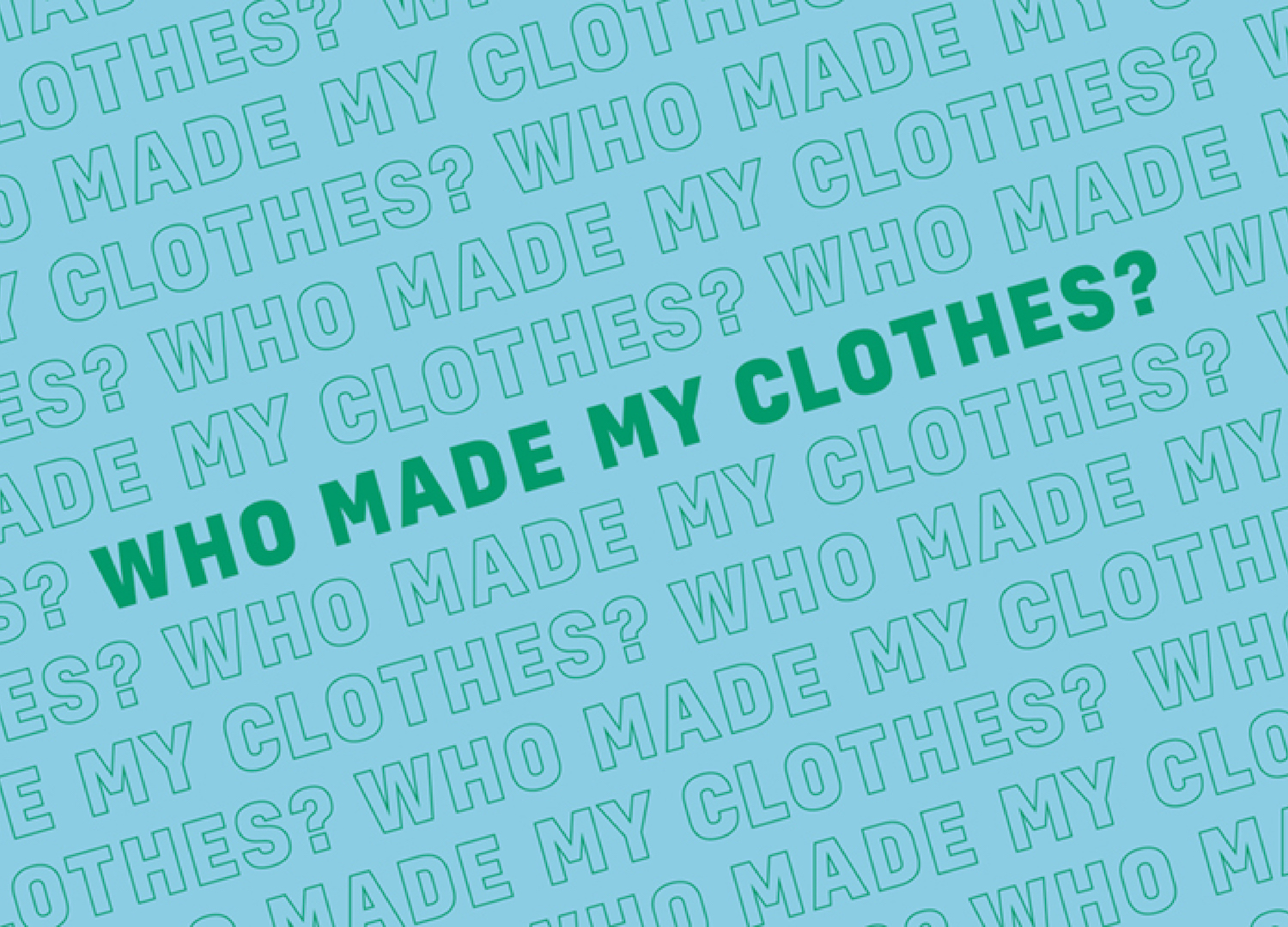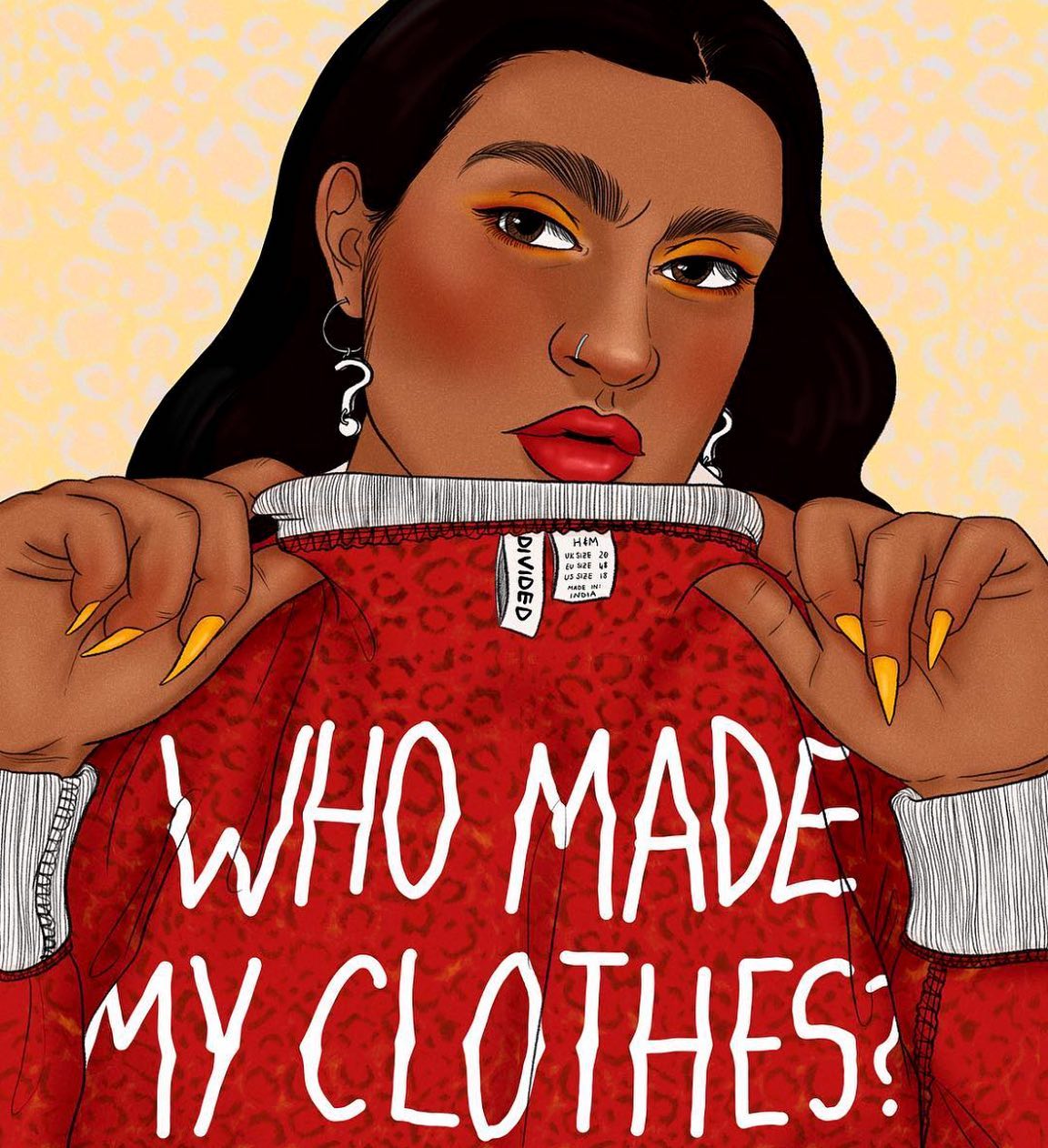
Why the Fashion Revolution Must be Intersectional
words TANESHIA ATKINSON top image via FASHION REVOLUTION
Fashion Revolution Week is a time when we come together as a global community to demand a better fashion industry. Here Yorta Yorta writer Taneshia Atkinson explains why this revolution must be intersectional.
Intersectional activism should be central to any revolution. Without it, we risk further perpetuating white supremacy.
Fashion is undeniably powerful. It makes us feel good. The industry is bold, exciting, captivating, and influential. Fashion has the power to strengthen identities, cultivate a sense of unity and call worldwide attention to social issues. Yet fast fashion is inherently linked to racism and white supremacy.
2013 saw one of the worst industrial disasters in history following the collapse of the Rana Plaza Building in Bangladesh. Sadly, more than 1100 people died and another 2500 were injured, many of whom were women of colour. This is when Fashion Revolution was born, quickly becoming the largest fashion activism movement in the world. Fashion Revolution envisions a global fashion industry that conserves and restores the environment and values people over growth and profit.
Women of colour make up 80% of the 74 million textile workers worldwide.
Women of colour make up 80% of the 74 million textile workers worldwide yet despite this, the faces of ethical fashion and sustainability remain mostly white and affluent and are deep-rooted in privilege. This leads us to an important point. We can’t talk about a fashion revolution without discussing the important role of intersectionality.

IMAGE: ILLUSTRATION BY ANSHIKA ‘ASH’ KHULLAR.
Intersectionality is “the interconnected nature of social categorisations such as race, class, and gender, regarded as creating overlapping and interdependent systems of discrimination or disadvantage”. The concept of intersectionality reinforces that not all oppression is created equal and forms of oppression can accumulate. A Black trans woman, for example, may experience sexism, racism, and transphobia. But a white cis woman may look to only revolt against sexism, which risks silencing the impact of other intersections.
Without intersectional activism, we see the ironic mass production of ‘girl power’ slogan tees made by the same people who exploit women of colour.
Everything from the food we consume to the way we dress ourselves is entwined with a system of oppression off the backs of… people of colour.
The exploitation of women of colour is further exacerbated as fast fashion companies continue to benefit from systemic racism and economic vulnerability. As writer and fashion consultant Aja Barber says, “Everything from the food we consume to the way we dress ourselves is entwined with a system of oppression off the backs of… people of colour.” To support this statement, an Oxfam report in 2019 found that just 1% of Vietnamese garment workers earned a living wage, and Bangladeshi garment workers didn’t earn a living wage at all.
In addition to the exploitative use of cheap labour and unsafe working conditions, fast fashion companies benefit dramatically from environmental racism. Years of overproducing clothing in an unsustainable way has had a catastrophic impact on the environment, further marginalising communities of colour worldwide. During the textile dyeing process, chemical dyes end up in water sources that communities of colour depend on for survival. In China, 70% of the rivers and lakes are contaminated by 2.5 billion gallons of wastewater from the textile and dye industry with a similar impact in Bangladesh, Indonesia and India. In wealthier countries, like the United States and Australia, people of colour often live and work in some of the most polluted and industrialised areas.
As clothing labels seek to meet the demands of fast fashion, communities of colour across the world suffer and this disproportionate impact cannot be ignored.
As tempting as it may be to point the finger at consumers, it is important to recognise that consumers are not solely responsible. Many low-income families worldwide rely on fast fashion, and the ‘vote with your dollar’ concept only works for people with a disposable income. Sustainable and ethical fashion should not be a privilege.
So how can you get involved?
If you are in a position to do so, decolonise your wardrobe and buy from ethical and Black-owned brands. This is also a great way to spark important conversations!
Diversity should extend beyond textiles. Call out the lack of diversity in the fashion industry from leadership roles to designers, models and board members.
The face of sustainability is white and affluent. Challenge the narrative! Listen to and amplify Indigenous voices. Indigenous people worldwide are the original land caretakers, life givers and matriarchs of sustainability.
Use your digital activism. Ask the brand #WhoMadeMyClothes and #WhatsInMyClothes and don’t underestimate the power of writing to your local member of parliament.
The Fashion Revolution has some other great ideas on how to be a Fashion Revolutionary and use your voice to make change.


